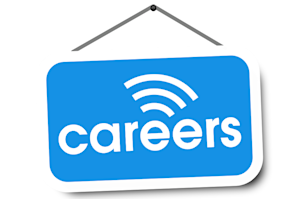Launched in 2003, LinkedIn is a social networking site primarily used for professional networking and its practical business use naturally makes it an obvious choice for recruitment. It currently has 80 million registered users and is the preferred site for business professionals. As of August 2011, LinkedIn had over 120 million registered users in more than 200 countries and territories worldwide. It is estimated that the membership grows by a new member approximately every second — a potentially deep talent pool to recruit. Profiles read like resumes, highlighting an individual’s career and professional interests and the site is widely used to expand networks, job hunt, source recruits, share insight and establish sales and marketing opportunities.
Getting started
LinkedIn is as much about the individual as it is about the company, so it is important to have a complete profile to provide credibility for yourself as well as your organization. Include past and current jobs, a summary of specialties, education, recommendations, company website and social media accounts, remembering to use keywords to help people find you.
Creating a company profile
By creating a company profile, potential business contacts and recruits will be able to learn more about your organization. It is also a great company and employer branding tool. To get started, look for the option ‘add a company’ under the ‘company‘ tab, and submit your business name and email domain that coincides with your organization’s website. Complete all the information, including a basic description, number of employees and industry, again considering keywords that will help people searching for your organization. You will also be able to include a logo, location and company blog, if desired, along with job postings appearing on your profile as well as links to the profiles of all current employees and their connections.
LinkedIn also automatically completes a company analysis, including your employees’ medium age, top schools and other companies with which you are connected (through past/current employees etc.). This has become an excellent tool for job seekers to conduct research on companies and portrays an accurate, albeit statistical, view of your organization. Individuals following your company on Linkedin can learn about career opportunities, new hires and upcoming events within your organization. It also allows you to include your Twitter feed to cross-promote your social media accounts.
Sourcing connections
As with all social media site, LinkedIn is about building connections. There are several ways to source connections:
People search. Search for individuals by typing their name in the search box on the top right hand side when selecting the “people” option. For popular names, it is possible to filter by location, company, relationship, industry, school and profile language.
Advanced people search. When searching for potential candidates, advanced people search allows you to search by keyword, then use the standard people search filter criteria. For example, by searching “CFO” or “project manager”, a list of individuals is generated with the keyword in the profile. Premium accounts also allow users to filter by member group, level of seniority, interests, function, company size, years of experience, Fortune 1000 ranking and tenure on LinkedIn. A premium account may be a wise investment for companies looking to LinkedIn as a primary recruitment tool and a strong compliment to the business development and sales function.
Add connections. You can also search for individuals by their email address. This would need to match the address they used when they signed up for their account.
Colleagues. Remember a particularly good marketing manager from a past company but can’t recall their surname? You can search for individuals from past companies listed in your profile. LinkedIn allows you to send connection requests to former colleagues who were employed at a company during the same period.
Classmates. As above, you can search individuals who attended your alma mater during the same period or graduation year. There is no additional way to filter results, however, so it may be challenging to find individuals if you attended a large University or college.
People You May Know. This feature allows you to find individuals with whom you share a common connection. This includes people you may have emailed through Outlook, individuals in your email address book, keywords in your profile and common connections. On the right had side of the screen LinkedIn will suggest three individuals you may know. By selecting “see more”, you will have additional suggestions. On the left hand side you will find filters to help target individuals with whom you may have a higher likelihood of knowing.
Reference search. While using LinkedIn as part of your recruitment strategy, the reference search tool allows you to source individuals who were your candidate’s colleagues. While a paid service, you can find unbiased information from sources that are not directly submitted as part of a candidate’s reference list.
Saved searches. Once you create a search, save the criteria. You can later rerun the same search and find individual who are new to LinkedIn or who have changed their profile information.
Groups
Getting involved in groups is a great way to connect with potential candidates and other LinkedIn members with similar interests. It also allows you to connect with individuals who are not part of your or your contacts’ networks. Try performing a search based on profession, interests, University, professional association, company alumni or other area. While regular interaction within groups can be time consuming, by choosing a few groups and dedicating some time every day, you’ll quickly expand your network and credibility.
Interaction within groups must be genuine and should not have an underlying sales message. Posting a relevant news article or linking to a blog post is a good way to get started and can spark a discussion. Aim for a thought provoking (and possibly somewhat controversial) topic to gauge others’ opinions. When done correctly, this can also serve as an excellent form of market research to learn more about different audiences. By monitoring the conversation, individuals displaying strong industry knowledge, drive and effective communication skills may emerge as potential candidates.
While general business etiquette prevails, it is still important to observe the discussion before engaging in the dialogue. Social communities can easily alienate individuals who try to use the platform for commercial purposes, so always approach conversations aiming to give more than to receive. Once determining the tone and types of posts shared, selectively respond to discussions, offering insight or links to supporting (or challenging) information. Many groups also provide guidelines for members, so read and understand before jumping in.
Other ideas
Integrate other accounts. Use the widget tool to import other elements, such as your Twitter stream or corporate blog. This will help you integrate your social media accounts while also helping you manage your time and resources.
Try using polls. Set up a poll on your LinkedIn group to find out more about candidates’ preferences, job hunting practices or general recruitment information. Use the intelligence to enhance your recruitment or HR strategy, then share findings with your followers through status updates, articles and blog posts.
Share knowledge. The Questions page includes hundreds of questions from users, by subject matter and language. This is a simple way to engage in social community dialogue. In addition, consider linking your answer to your blog or other social media account to increase traffic and followers on multiple sites.
Market your employer brand. Include your recruitment social media URLs on all communications, including marketing literature, business cards, email signature, website, job postings and other social media accounts. Aim to convert clients into job applicants by tying into customer service outlets and encourage all employees to do the same.
Headhunting. Ensure each line manager and HR representative has an account to source candidate leads, source recommendations and perform reference checks. With such a large membership base, LinkedIn allows you to source individuals who may not be actively job seeking.
Offer recommendations. Whether for a former colleague, subordinate or business contact, LinkedIn recommendations provide an endorsement for an individual, strengthening their profile and professional offering. While it is important to observe company policies regarding [recommendations — hyperlink to article on recommendations that I wrote], providing this information demonstrates to potential candidates that you are a fair employer who maintains good relations with former employees.
Post recruitment videos or presentations. Share your recruitment materials through your LinkedIn and other social media sites and encourage existing employees to do the same. Offer incentives for individuals to re-post and share information with their followers.
Get introduced. LinkedIn allows you to see who connects you with another individual. You can ask contacts to introduce you to individuals in their network whom you think would make a good candidate. This offers credibility and word-of-mouth promotion.
Post jobs. Advertise job opportunities for $195 for a 30 day posting or purchase a multiple posting package. You can also proactively post jobs within groups or as your status, directing people to your recruitment webpage. LinkedIn has also now enabled a function allowing companies to post a link on their online job opportunities and letting candidates apply using their profile instead of a formal resume. [Note to Ryan…what is your take on this practice? We should include a hyperlinked article on this].
Find experts. Work with your HR and employee development team to source speakers to provide low or no-cost training to your existing employee base. Enhancing your offering as a great place to work will aid your employer branding and recruitment strategy. These industry experts may also be interested in providing a guest blog, case study, webinar or online discussion.
Advertise. You can purchase LinkedIn advertising to promote your employer brand and segment by industry, seniority, geography, job function, age and gender. Many social media outlets offer highly targeted advertising options not available through traditional media channels. Speak with your marketing team to formulate a strategy the incorporates both business development and recruitment priorities.
The Linkedin platform is a goldmine for recruiting and its growth over the past year suggests that it will continue to be a dominant player for some time to come. My Linkedin network has provided me with some terrific business opportunities and I’m sure you’ll find it works well for you and your business too. If you have a chance, stop on by and connect with me @ryanstgermaine
Happy Hunting!
Read More

